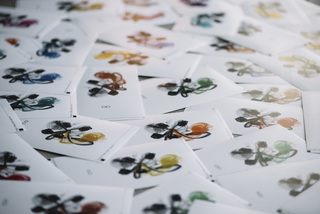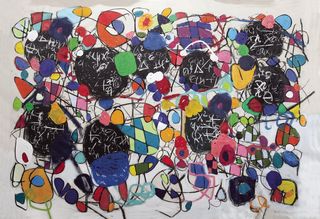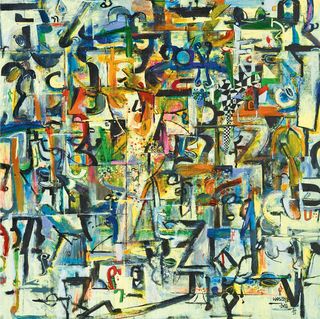The Name
Our Estate is situated on the southeast flank of Wappo Hill, and the name Moonracer – Realm’s first Estate wine - sprung up as a result of research we did into the customs of the Wappo Native Americans who first inhabited this area. From the writings of Jack London, we learned that area tribes would often compete in various sporting events, including “moon races,” which were long foot races conducted during the light of the full moon. In one such race, it is said the competitors could see the moon at seven different points through the peaks of the Mayacamas Mountains to the west.
The Label
We met Spanish artist Sergio Albiac through a good friend and customer. Sergio works with computer codes and programming to create unique pieces of art. On his website he says: “I write computer programs that transform reality to express ideas about identity, beauty, chance and human emotions.” We admired Sergio’s work - it’s striking, modern and abstract - and we thought it would play well on a wine label.
We told Sergio about Realm and Moonracer and the name’s derivation from the Wappos. Sergio pointed out that Native Americans blended art, science and nature throughout their lives as a means of survival and pleasure. Winemakers, he said, do the same thing: there’s an artistic, scientific and natural component to what we do. Sergio wanted to develop a label that would incorporate these three components.
He developed an algorithm using data Benoit provided from weather stations on the Estate, including temperature, wind and solar radiation throughout the 2014 growing season (the first vintage of Moonracer). He inserted the data into the algorithm, and the computer was able to “read” the information and produce abstract images. What’s cool, though, is that there was enough data to create a unique label for each bottle of wine. So each label is different. All 4800 labels. It’s all the same code, so there’s a familial feel to them, but they’re different images. On the bottom, each label is stamped with the date and the data from which that label was created.
No one has ever done this before.



